Taking Control of Hair Loss The Top Solutions for Men
Taking Control of Hair Loss The Top Solutions for Men
Are you tired of looking in the mirror and seeing more hair on your brush than on your head? Hair loss is a common struggle that affects millions of men worldwide. But fear not, gentlemen! This blog post is here to help you take control and tackle hair loss head-on (pun intended). We’ve rounded up the top solutions for men so you can regain confidence in your appearance and flaunt those luscious locks once again. From innovative treatments to natural remedies, get ready to bid farewell to baldness and say hello to a future filled with impeccable hairstyles. Let’s delve into the realm of hair restoration together – because it’s about time we reclaim our crowning glory!
Understanding Hair Loss in Men
Hair loss is a common concern for men of all ages. It can range from a receding hairline to thinning hair on the crown of the head, and it can greatly impact self-confidence and self-esteem. To effectively address hair loss, it’s important to understand its causes and different types.
Causes of Hair Loss in Men
Male pattern baldness (also known as androgenic alopecia) is the most common cause of hair loss in men. It is hereditary and caused by a combination of genetics, hormones, and age. Other factors that can contribute to male pattern baldness include stress, diet, medications, and certain medical conditions.
In addition to male pattern baldness, other types of hair loss may affect men. These include telogen effluvium (sudden shedding due to hormonal changes or stress), alopecia areata (an autoimmune disorder that causes patches of baldness), and traction alopecia (hair loss from tight hairstyles).
Understanding the different causes of hair loss can help determine the best course of treatment.
Signs and Symptoms
The most obvious sign of hair loss in men is a gradual thinning on the top of the head or a receding hairline. However, some other signs may indicate an underlying issue with hair health. These include excessive shedding during showering or combing, an itchy scalp, redness or flaking on the scalp, or sudden changes in texture or thickness.
Treatment Options
There are various treatment options available for addressing hair loss in men. The best approach will depend on the underlying cause and severity of the condition.
1. Medications: There are two FDA-approved medications for treating male pattern baldness- finasteride (Propecia) and minoxidil (Rogaine). Finasteride works by inhibiting DHT production (a hormone responsible for hair loss), while minoxidil stimulates hair growth. These medications are most effective when started early on in the process of hair loss.
2. Hair transplant surgery: For more severe cases of male pattern baldness, hair transplant surgery may be an option. This involves taking healthy hair follicles from one part of the scalp and implanting them into thinning areas. It can provide a permanent solution, but it is important to consult with a reputable and experienced surgeon.
3. Lifestyle changes: Making lifestyle changes such as reducing stress, improving diet and exercise habits, and limiting tight hairstyles can also help improve overall hair health.
4. Cosmetic solutions: There are various cosmetic solutions available for men looking to camouflage their thinning or receding hairline. These include scalp micro pigmentation (a semi-permanent tattoo that creates the illusion of thicker hair) or custom-made wigs or toupees.
No matter which treatment option is chosen, men need to address their concerns about hair loss and take control of their journey towards healthier and fuller-looking hair. With the right understanding
Causes of Male Pattern Baldness:
Male pattern baldness, also known as androgenetic alopecia, is the most common form of hair loss in men. It affects approximately 50 million men in the United States alone, with two-thirds experiencing some degree of hair loss by the age of 35 and about 85% by the age of 50. While it is a natural part of aging for many men, several underlying causes can contribute to male pattern baldness.
1. Genetics: The primary cause of male pattern baldness is genetics. It is an inherited trait, with some men being more susceptible than others due to their family history. If your father or grandfather experienced hair loss, there is a higher chance that you may also develop male pattern baldness.
2. Hormones: Testosterone plays a significant role in male pattern baldness. It gets converted into dihydrotestosterone (DHT), which shrinks the hair follicles and makes them unable to produce healthy hair growth. This hormone imbalance can be genetic or due to increased sensitivity to DHT.
3. Age: As we age, our bodies naturally produce fewer hormones and proteins needed for healthy hair growth. This can lead to thinning hair and eventual balding in men.
4. Medical Conditions: Certain medical conditions such as thyroid disorders and autoimmune diseases can contribute to male pattern baldness by disrupting the normal functioning of hormones and affecting the hair growth cycle.
5. Certain Medications: Some medications used for treating heart disease, depression, high blood pressure, and arthritis have been linked to causing temporary or permanent hair loss in men.
6. Stress: Chronic stress has been found to accelerate hair loss in men who are genetically predisposed to it. Stress can disrupt normal hormonal balance and cause excessive shedding of hair.
7. Dietary Factors: A poor diet lacking essential nutrients like protein, iron, zinc, B vitamins, and biotin can contribute to hair loss in men. These nutrients are vital for healthy hair growth and deficiencies can lead to weakened hair follicles.
Male pattern baldness is a complex condition with multiple factors contributing to its development. While some causes cannot be controlled, such as genetics and age, others like stress, diet, and certain medications can be managed or improved upon. Understanding the root cause of your hair loss can help you take control and seek out the most effective solutions for regrowing or maintaining a healthy head of hair.
Treatment Options for Hair Loss
Treatment Options for Hair Loss:
If you’re experiencing hair loss, it’s important to know that you’re not alone. In fact, according to the American Hair Loss Association, approximately 85% of men will experience some form of hair loss by the age of 50. This can be a major blow to one’s self-esteem and confidence, but the good news is that there are numerous treatment options available to help combat hair loss.
1. Topical Medications:
One of the most common treatments for hair loss is topical medications. These are applied directly to the scalp and work by reducing levels of DHT (dihydrotestosterone) – a hormone that is known to cause male pattern baldness. The most popular topical medication is minoxidil, also known as Rogaine. It’s available over-the-counter in various strengths and has been proven effective in stimulating hair growth.
2. Oral Medications:
Another option for treating hair loss is oral medications. Finasteride (Propecia) is a prescription medication that works by inhibiting the enzyme responsible for converting testosterone into DHT. By reducing DHT levels in the body, it can slow down or even stop hair loss in some cases.
3. Low-Level Laser Therapy:
Low-level laser therapy (LLLT) is a relatively new treatment option for hair loss that uses light energy to stimulate cellular activity on the scalp and promote regrowth of hair follicles. This non-invasive treatment can be done at home using FDA-approved devices such as laser combs or caps.
4. Platelet-Rich Plasma (PRP) Therapy:
Platelet-rich plasma therapy involves drawing blood from the patient and extracting platelets which are then injected back into the scalp where they release growth factors that help repair damaged cells and promote new cell growth. While still being studied, PRP therapy has shown promising results in improving hair thickness and regrowth.
5. Expand Hair Transplant:
Hair transplant surgery is often considered the most effective and permanent solution for hair loss. It involves taking hair follicles from areas of the scalp that still have healthy growth and transplanting them to areas where hair has thinned or stopped growing. With today’s advanced technology, hair transplants can now be done with minimal scarring and a quick recovery time.
There are various treatment options available for men struggling with hair loss. It’s important to consult with a medical professional to determine the best course of action based on your individual needs and goals. Don’t let hair loss control your life – take control by exploring these treatment options and finding what works best for you.
– Prescription Medications
Prescription medications are often viewed as the most effective solution for treating hair loss in men. These medications are specifically designed and prescribed by doctors to address the underlying causes of hair loss and promote regrowth.
One of the most commonly prescribed medications for male pattern baldness is finasteride, also known as Propecia or Proscar. This medication works by blocking the conversion of testosterone into dihydrotestosterone (DHT), which is believed to be a major contributing factor to male pattern baldness. Studies have shown that finasteride can effectively slow down hair loss and even stimulate new hair growth in some cases.
Another popular prescription medication is minoxidil, also known as Rogaine. Minoxidil comes in both topical and oral forms, with the topical version being more commonly used for treating hair loss. This medication works by widening blood vessels and increasing blood flow to the scalp, providing essential nutrients and oxygen to hair follicles. Minoxidil is effective in slowing down hair loss and promoting regrowth, but it must be used continuously to maintain results.
In some cases, doctors may prescribe a combination of finasteride and minoxidil for a more comprehensive approach to managing hair loss. This combination is highly effective in not only slowing down hair loss but also promoting new growth.
For men with severe cases of male pattern baldness or those who do not respond well to finasteride or minoxidil, dutasteride may be prescribed instead. Dutasteride works similarly to finasteride but is more potent in inhibiting DHT production. However, it can also come with stronger side effects such as decreased libido and erectile dysfunction.
Aside from these medications specifically targeted toward addressing male pattern baldness, other prescriptions may be given depending on the cause of hair loss. For example, if an underlying medical condition such as alopecia areata or thyroid problems is contributing to hair loss, doctors may prescribe corticosteroids or hormone replacement therapy to manage the underlying issue.
It is important to note that prescription medications for hair loss can come with potential side effects and should only be taken under the guidance of a doctor. Some common side effects may include decreased libido, erectile dysfunction, and breast tenderness. It is essential to discuss any concerns or potential side effects with your doctor before starting any medication regimen.
Prescription medications are one of the top solutions for managing hair loss in men. They can effectively slow down hair loss and promote regrowth when used as directed by a doctor. However, it is crucial to understand the potential risks and side effects associated with these medications and always consult with a healthcare professional before beginning any treatment plan.
– Topical Treatments
When it comes to treating hair loss, topical solutions are a popular choice among men. These products are applied directly to the scalp and work by stimulating hair follicles, promoting growth, and preventing further hair loss. Here, we’ll explore the top topical treatments for men looking to regain control over their hair.
1. Minoxidil: This is perhaps the most well-known and widely used topical treatment for male pattern baldness. It works by prolonging the anagen (growth) phase of hair follicles and increasing blood flow to the scalp. Minoxidil is available in both 2% and 5% strengths, with the latter being more effective for hair regrowth. While it may take several months to see results, many men have reported significant improvements in hair thickness and density with consistent use of minoxidil.
2. Finasteride: Unlike minoxidil which is applied topically, finasteride is taken orally as a prescription medication. It works by blocking the production of dihydrotestosterone (DHT), a hormone that shrinks hair follicles in men with genetic hair loss. Studies have shown that finasteride can not only stop further hair loss but also promote new growth in some cases.
3. Ketoconazole Shampoo: This medicated shampoo is effective in treating male pattern baldness due to its anti-fungal properties. It works by reducing inflammation on the scalp and preventing DHT from binding to hair follicles. In addition to promoting healthy scalp conditions, ketoconazole shampoo may also help slow down or reverse hair loss when used consistently.
4 . Peppermint Oil: A natural alternative to chemical-based treatments, peppermint oil has been shown to improve circulation on the scalp and stimulate dormant follicles. When applied topically, this essential oil can help increase blood flow which delivers vital nutrients to nourish existing hairs while encouraging new growth.
5. Saw Palmetto: Extracted from the berries of a palm tree, saw palmetto is believed to work similarly to finasteride by inhibiting the activity of DHT. While its effectiveness may not be as established as other treatments, many users have reported positive results with consistent use.
It’s important to note that while topical treatments can be effective in treating hair loss, they are not a one-size-fits-all solution and may not work for everyone. It’s always best to consult with a healthcare professional or trichologist before starting any new form of treatment, especially if you have underlying medical conditions. Additionally, consistency is key when using topical treatments – results may take time, and discontinuing use can result in a reversal of progress.
Topical solutions offer an accessible and convenient option for men looking to combat hair loss. Whether used alone or in combination with other treatments, these products have been shown to help improve scalp health and stimulate hair growth. Finding the right treatment regimen for your individual needs can make all the difference in taking control of your hair loss
– Laser Therapy
Laser therapy, also known as low-level laser therapy (LLLT), is an emerging treatment for hair loss that uses light energy to stimulate hair growth. It works by penetrating the scalp and stimulating blood flow to the hair follicles, promoting cellular activity and ultimately leading to thicker, healthier hair.
One of the main benefits of laser therapy is that it is non-invasive and painless. Unlike other treatments such as hair transplants or medications, there is no risk of scarring or side effects with laser therapy. This makes it a popular choice for those seeking a more natural approach to treating their hair loss.
There are two types of lasers used in this treatment: red light lasers and low-level infrared lasers. Red light lasers have been shown to improve cell metabolism, while low-level infrared lasers penetrate deeper into the scalp and can increase circulation. Together, these lasers work synergistically to promote hair growth.
The procedure itself is simple and can be done at home with FDA-approved devices such as hand-held combs or helmets. These devices emit red light or infrared rays onto the scalp, typically for about 15 minutes per session. The recommended frequency of treatment varies depending on the severity of hair loss, but most experts suggest using it 2-3 times per week for optimal results.
One study published in The American Journal of Clinical Dermatology showed that participants who used LLLT experienced a significant reduction in hair shedding after just 6 weeks of treatment. Additionally, they reported an improvement in the overall thickness and quality of their hair after 24 weeks.
While LLLT may not provide immediate results like some other treatments, its long-term benefits make it a promising solution for those struggling with hair loss. However, it’s important to note that results may vary from person to person, and consistency with treatment is key.
Laser therapy offers a safe and effective alternative for men looking to combat their thinning hair without drugs or surgery. It’s a convenient and affordable option that can be easily incorporated into one’s daily routine to promote healthy hair growth. Although it may not be the solution for everyone, it is worth considering as part of a comprehensive approach to managing hair loss. Consult with a dermatologist or hair specialist to determine if laser therapy is the right choice for you.
– Hair Transplant Surgery
Hair loss is a common issue that many men face, and it can significantly impact their self-esteem and overall well-being. While there are numerous solutions available for hair loss, one of the most effective and long-lasting options is hair transplant surgery.
Hair transplant surgery involves taking hair follicles from areas of the scalp that have thicker hair growth (typically the back or sides of the head) and transplanting them to areas where there is thinning or baldness. The procedure allows for a natural-looking restoration of hair in areas where it has been lost.
The first step in a hair transplant surgery is a consultation with a qualified surgeon. During this initial meeting, the surgeon will examine your scalp, discuss your medical history, and determine if you are a suitable candidate for the procedure. It’s essential to be honest during this consultation as certain medical conditions or medications may affect your eligibility for surgery.
If your surgeon determines that you are a good candidate for a hair transplant, they will discuss the various techniques available based on your specific needs and desired results. The two main types of procedures are follicular unit transplantation (FUT) and follicular unit extraction (FUE).
FUT involves harvesting a strip of skin from the donor area (usually at the back of the head). This strip is then dissected into individual follicular units under magnification before being transplanted into tiny incisions made by the surgeon in the recipient area. FUE, on the other hand, involves extracting individual follicular units directly from the donor area using specialized tools before implanting them into small incisions in the recipient area.
Both techniques can achieve successful results; however, FUE tends to be less invasive with minimal scarring compared to FUT.
The actual procedure can take several hours to complete depending on how much hair needs to be transplanted. You will remain awake during this time; however, you may be given local anesthesia to minimize any discomfort. Once the surgery is complete, you will be able to go home the same day; however, it’s recommended that you have someone drive you as you may experience some tenderness and swelling.
After the surgery, your transplanted hair will fall out within a few weeks. This is perfectly normal and is part of the natural cycle of hair growth. Within a few months, new hair will begin to grow in its place, gradually thickening and filling in any areas of thinning or baldness.
Hair transplant surgery can be a life-changing solution for men struggling with hair loss. With advancements in technology and techniques, achieving natural-looking results has become easier than ever before. Consult with a qualified surgeon to determine if this solution is right for you and take back control of your hair loss.
Lifestyle Changes to Improve Hair Health
Lifestyle plays a key role in our overall health, including hair health. While there are various medical treatments and products available for hair loss, making certain lifestyle changes can also greatly contribute to improving the health of your hair.
1. Diet: A balanced and nutritious diet is essential for healthy hair growth. Incorporating foods rich in vitamins, minerals, and proteins such as leafy greens, eggs, nuts, and fish can promote strong and shiny hair. Additionally, staying hydrated by drinking plenty of water is crucial for maintaining healthy hair.
2. Stress Management: Excessive stress can cause changes in hormones that lead to hair loss. It is important to find ways to manage stress through activities like meditation, yoga, or indulging in hobbies that help relax your mind.
3. Regular Exercise: Besides helping with stress management, regular exercise promotes good circulation which delivers oxygen and nutrients to the scalp and helps keep the hair follicles healthy.
4. Quit Smoking: Smoking has been linked with premature graying of hair due to the harmful chemicals it contains. It can also damage your hair follicles leading to thinning or baldness.
5. Use Gentle Hair Products: Avoid using harsh chemicals on your scalp as they can strip natural oils from your hair resulting in dryness and breakage. Choose gentle shampoos specifically designed for men’s hair that contain natural ingredients like argan oil or saw palmetto which aid in strengthening the roots.
6. Exfoliate Your Scalp: Just like our skin needs exfoliation, our scalp does too! By gently massaging the scalp while shampooing you can remove any buildup of dead skin cells which may clog pores impeding new growth.
7. Avoid Hot Water Showers: Hot water strips away natural oils from our body including the ones on our scalp making it dry and causing frizziness or dandruff which hinders healthy-looking locks
8. Get Enough Sleep: Lack of sleep can lead to hormonal imbalances that can cause hair loss. Aim for a minimum of 7-8 hours of quality sleep every night.
By incorporating these lifestyle changes into your daily routine, you can not only improve the health of your hair but also prevent further hair loss. Remember, consistency is key when it comes to seeing results so stick to a healthy routine and be patient as it takes time for changes to reflect on our bodies including our precious locks!
Natural Remedies for Hair Loss
Hair loss is a common concern for both men and women, but it can be particularly distressing for men due to societal expectations and attitudes towards baldness. While there are numerous cosmetic solutions available, such as hair transplants and medications, these options can be expensive and may come with potential side effects. Luckily, several natural remedies can help address hair loss without breaking the bank or risking adverse reactions.
1. Scalp massage: Massaging the scalp increases blood flow to the hair follicles, promoting hair growth. This can be done with essential oils like rosemary or peppermint oil for added nourishment and stimulation.
2. A healthy diet: Hair requires essential nutrients such as vitamins A, B, C, D, and E along with minerals like iron and zinc to grow strong and healthy. Including foods rich in these nutrients like leafy greens, eggs, fatty fish like salmon, and nuts/seeds in your diet can help improve hair health.
3. Probiotics: Probiotics contain beneficial bacteria that support a healthy gut microbiome which has been linked to improved hair growth. Incorporating probiotic-rich foods like yogurt or kefir or taking a daily probiotic supplement may help promote healthier hair.
4. Herbal supplements: Certain herbs have been used traditionally to combat hair loss such as saw palmetto extract which is believed to inhibit the hormone responsible for male pattern baldness (DHT). Other popular herbal supplements include stinging nettle root extract, ginseng root extract, etc., which may also aid in reducing hair loss.
5. Essential oils: Essential oils have long been used in traditional medicine for their various healing properties including stimulating blood circulation on the scalp when applied topically. Lavender oil is believed to increase the number of follicles while tea tree oil helps unclog blocked pores on the scalp which could potentially hinder new hair growth.
6. Aloe vera: The gel from the aloe vera plant is known to soothe irritated scalp and boost hair growth. It can be applied directly to the scalp or added to a carrier oil like coconut oil for added hydration.
In addition to these natural remedies, it is essential to maintain good hair care habits such as using mild shampoos, avoiding harsh chemicals and heat styling tools, and reducing stress levels. While there is no quick fix for hair loss, incorporating natural remedies into your routine can help encourage healthier, fuller hair over time without any potential adverse effects. As always, consult with a healthcare professional before starting any new supplements or making significant changes to your diet.
The Importance of a Healthy Diet and Exercise
When it comes to managing hair loss, many men tend to focus solely on topical treatments and medications. However, what they often overlook is the importance of maintaining a healthy diet and incorporating regular exercise into their routine. It may seem unrelated, but the truth is that both diet and exercise play crucial roles in promoting a healthy scalp and preventing hair loss.
A balanced diet rich in essential nutrients such as protein, vitamins, minerals, and healthy fats is vital for maintaining strong and healthy hair. Protein, specifically keratin, is the building block of our hair strands, making it necessary to consume enough protein from sources like lean meats, fish, eggs, legumes, nuts, and seeds. Vitamin C aids in collagen production which helps maintain hair structure while biotin promotes healthy cell growth. Minerals like iron and zinc are also essential for keeping the scalp nourished since deficiencies in these can contribute to brittle or slow-growing hair.
In addition to providing proper nutrition for your hair follicles from the inside out, taking care of one’s physical health through exercise has numerous benefits that extend beyond just weight management. Regular physical activity increases blood flow and circulates oxygen throughout the body, supplying follicles with the necessary nutrients they need for optimal function. This improved circulation also helps remove toxins more efficiently from the body while reducing stress levels which have been linked to hair loss.
Moreover, a sedentary lifestyle lacking physical activity can lead to obesity which not only increases your risk of serious health issues but can also contribute to hormonal imbalances known to cause hair loss. Being overweight can result in increased levels of testosterone being converted into DHT (dihydrotestosterone) a hormone believed among experts as one of the leading causes of male pattern baldness. Fortunately, this vicious cycle can be broken by establishing healthier habits through exercise.
In conclusion, prioritizing a nutritious diet accompanied by an active lifestyle is crucial for maintaining a healthy scalp and preventing hair loss. So, make sure to include plenty of fruits, vegetables, lean protein sources, and whole grains in your meals while incorporating at least 30 minutes of exercise into your daily routine. This simple yet effective approach can help you take control of your hair loss and ultimately lead to a healthier overall well-being.
Managing Stress Levels:
Stress is a common factor that many men face in their daily lives. Whether it’s due to work, family responsibilities, or other personal issues, stress can take a toll on one’s physical and mental well-being. And unfortunately, excessive stress has been linked to hair loss in men.
When we are under stress, our bodies produce the hormone cortisol, which can lead to inflammation and damage to hair follicles. This disruption in the natural hair growth cycle can result in thinning and shedding of hair. Therefore, managing stress levels is crucial for maintaining healthy hair and preventing hair loss.
So how can you effectively manage your stress levels? Here are some tips that can help:
1. Identify Your Stress Triggers:
The first step in managing stress is recognizing what triggers it for you. Take note of situations or events that make you feel stressed and try to avoid them or come up with coping mechanisms.
2. Practice Relaxation Techniques:
Incorporating relaxation techniques such as deep breathing exercises, meditation, yoga, or tai chi into your daily routine can significantly reduce stress levels. These techniques help calm the mind and body, promoting overall well-being.
3. Exercise Regularly:
Physical activity not only helps keep your body fit; it also releases endorphins- “feel-good” hormones that act as natural painkillers and mood boosters. Incorporate moderate-intensity exercise such as walking, jogging, cycling, or swimming into your routine to relieve stress.
4. Get Enough Sleep:
Lack of sleep adds more strain on an already stressed-out mind and body. Make sure to get at least 7-9 hours of quality sleep every night to allow your body to recover from daily stresses and regulate hormone levels.
5. Seek Support:
Talking about your problems with someone you trust can be therapeutic and help ease feelings of anxiety or frustration related to stressful situations. Surround yourself with supportive friends/family or seek professional counseling if needed.
6. Take Supplements:
Certain herbs and supplements such as ashwagandha, holy basil, and fish oil have been shown to reduce stress levels. Consult with your healthcare provider before adding any supplements to your diet.
Managing stress levels plays a significant role in preventing hair loss in men. Incorporating these stress management techniques into your lifestyle can not only promote healthy hair growth but also benefit your overall health and well-being. Remember to prioritize self-care, relax, and take time for yourself whenever possible- your mind, body, and hair will thank you for it!
Tips for Styling Thinning Hair
If you are one of the many men who struggle with hair loss and thinning hair, fear not – there are plenty of tips and tricks to help style your hair in a way that boosts confidence and minimizes the appearance of hair loss. Here are some helpful tips for styling and thinning hair.
1. Choose a Shorter Haircut: While it may seem counterintuitive, opting for a shorter haircut can make thinning hair appear fuller. With less weight pulling on your strands, they will have more volume and body, making them look thicker.
2. Use Products Specifically Designed for Thinning Hair: There are many products on the market specifically designed for men with thinning hair, such as volumizing shampoos or thickening sprays. These can add texture and fullness to your locks.
3. Avoid Heavy Styling Products: On the other hand, heavy gels or waxes can weigh down your already fragile strands and make them look even thinner. Opt for lighter products like mousses or sea salt sprays to add texture without weighing down your hair.
4. Consider Getting Regular Trims: Getting regular trims every 6-8 weeks can help keep your hair looking healthy and full. Split ends can make hair appear thinner, so getting rid of them regularly will give your locks a healthier appearance.
5. Experiment with Different Parting Styles: Changing how you part your hair can help create an illusion of more volume – try parting on the opposite side or going for a classic comb-over style to hide any areas where the scalp may be showing through.
6. Embrace Your Natural Texture: Sometimes trying to fight against natural texture or curliness can make thinning hair look worse because it requires heat styling tools that can cause damage and breakage. Instead, embrace your natural texture by using products that enhance it.
7. Forget About Perfectly Smooth Hair: Thin or fine hair can be difficult to control and style, so forget about trying to achieve perfectly smooth or slicked-back styles that may emphasize thinning areas. Instead, opt for more textured hairstyles that add volume and movement to your hair.
8. Be Gentle with Your Hair: Thinning hair is more fragile than thick hair, so be gentle when brushing or styling it. Avoid tugging or pulling on your strands too much, and use a wide-tooth comb instead of a brush when hair is wet.
9. Consult with a Stylist: If you are unsure about how to best style your thinning hair, don’t hesitate to consult with a professional stylist who can suggest the right products and techniques for your specific hair type and concerns.
With these tips in mind, you can take control of your thinning hair and find a style that makes you feel confident and stylish. Remember – embracing what you have is always key, no matter what stage of hair loss you may be experiencing.
Embracing Baldness: It’s Not the End
For many men, hair loss can be a daunting and distressing experience. Losing one’s hair is often associated with growing old or being less attractive, leading to feelings of self-consciousness and lowered self-esteem. However, the truth is that baldness doesn’t have to be the end – in fact, it can lead to a new sense of confidence and style.
The first step towards embracing baldness is changing your mindset. Instead of viewing it as a sign of aging or inadequacy, try to see it as an opportunity for reinvention. Many successful men, such as Dwayne “The Rock” Johnson and Bruce Willis, have embraced their baldness and continue to exude masculinity and charm. It all comes down to acceptance and learning to love yourself just the way you are.
Another helpful tip for embracing baldness is finding a style that suits you. This could mean going completely shaven, rocking a buzz cut, or having a trimmed beard paired with cropped hair on top. Experimentation is key here – find what makes you feel comfortable and confident. Keep in mind that not everyone can pull off every look; focus on enhancing your features rather than hiding them.
Moreover, don’t underestimate the power of grooming when it comes to embracing baldness. Pay attention to your facial hair – keeping it well-maintained can create a balance between your head and face while also adding definition. Invest in high-quality skincare products for a healthy-looking scalp (yes, even if there’s no hair!) And make sure to keep those eyebrows groomed too.
Additionally, incorporating some fashion flair into your wardrobe can help boost confidence when rocking your bald head. Experiment with different outfit styles – whether it’s clean-cut business attire or casual streetwear – until you find one that makes you feel like your best self.
But perhaps most importantly, remember that true confidence comes from within. Embrace your baldness as a part of you and focus on other aspects of your life that bring you joy and fulfillment. Surround yourself with positive people who accept you for who you are, not just how much hair you have (or don’t have).
Embracing baldness is all about changing perspectives and focusing on self-acceptance. Let go of societal standards and instead embrace your unique style. With the right mindset, grooming routine, fashion choices, and support system, it’s clear that going bald is not the end – it’s just a chance for a new beginning.
Don’t forget to give us a follow on Facebook!

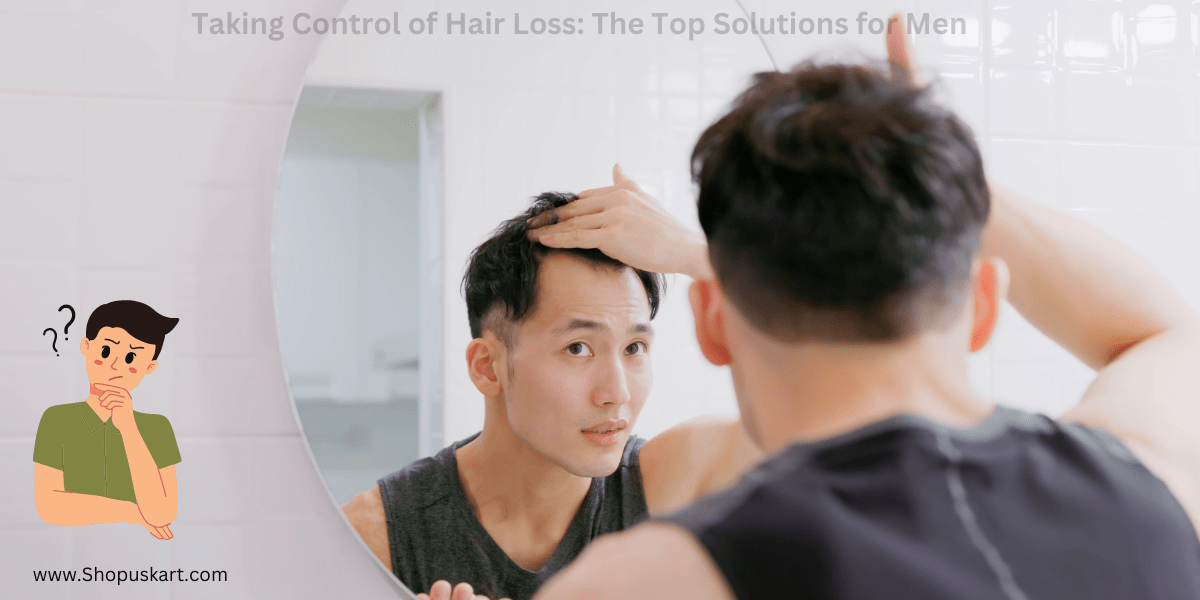

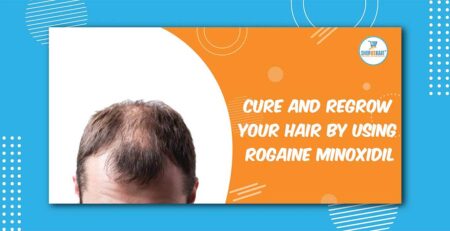
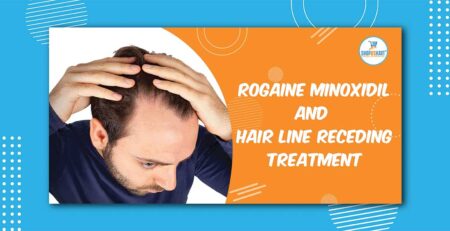

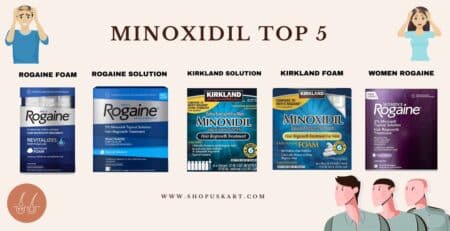
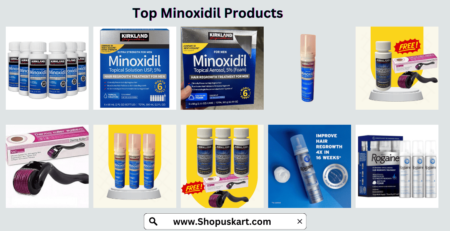


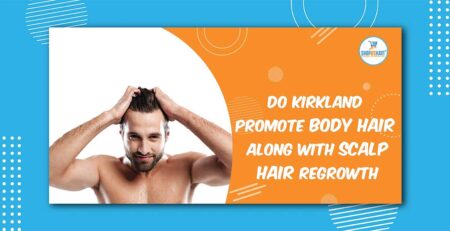

Leave a Reply